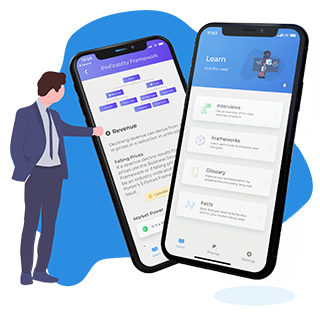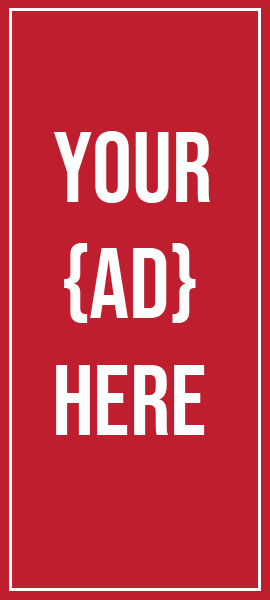
Other Business Documents
Good writing is the result of good planning and clear thinking.
– Warren Bennis
Introduction
There are many types of documents used in business aside from agendas, business reports, and proposals. In this lesson, we will discuss an overview of four other types: the Request for Proposals, Projections, Executive Summaries, and Business Cases.
Requests for Proposals
A Request for Proposals (RFP) is an invitation for vendors and/ or service providers to submit a qualified pitch to address a company’s need. At the very least, RFPs inform the public that you are on the lookout for potential partners in an endeavor. At best, a well-written RFP helps you source vendors and service providers who fit well with your needs and objectives.

There is no one right format for the RFP. Some can be informal and as short as 1-2 pages. Bigger projects, especially those that involve funding from government or private interest groups, have RFPs as long as a graduate thesis!
Effective RFPs should at least explain:
- What the project is
- What exactlydo you require as output (your deliverables)
- How proposals would be reviewed
- Your contact information
More detailed RFPs can include additional information like the background of your company/ organization, your project timetable, your budget for the project, specific legal stipulations (e.g. the need to sign a non-disclosure agreement), incentives for superior service, and ways the project would be monitored and evaluated.
Brief check
The best way to know what you include in a Request for Proposals is to put yourself in the shoes of your targeted vendor or service provider. Ask yourself: what would you need to know to submit an accurate and qualified bid? What would motivate you to submit a great proposal?
See below asample Request for Proposals:
REQUEST FOR PROPOSALS
Who we are:
Mitchell & Clark Industries is the country’s premier manufacturer of home appliances. This January 2010, we would be opening our 17th branch in Louisville, Kentucky. We are going to outsource all employee recruitment for the new branch.
What we are looking for:
What we are looking for a team of Human Resource Practitioners who would be willing to take on the tasks of:
- sourcing applicants for our 200 open positions,
- conducting all the pre-requisite psychological evaluation and background check, and
- deciding on the best candidate per position.
The timeline for this project is November 1- December 31, 2009.
How proposals would be evaluated:
Proposals would be judged based on:
- Quality of applicant selection and screening process proposed.
- Budget (Priority would be given to contractors who can provide all services for less than $50,000)
- Applicant’s background and credentials in Employee Recruitment
Please address your proposals to Ms. Josie Ackles, Human Resources Director. Mitchell & Clark Main Office, 1248
Hollbrook Drive, New York City.
(Note: This sample includes only basic information for the purpose of illustration. An actual RFP for the project described is recommended to be more detailed to be effective.)

Projections
Projections are documents that show estimates of future performance, alongside data that can substantiate your predictions. The most common projection document is financial projection, which shows future income based on present and anticipated cash flow.
Projections can be short-term, forecasting income in the next quarter or next year. They can also be long-term, going as far forward as a decade. Some projection documents present case scenarios, showing predictions based on changes in particular variables.
Projections are usually illustrated by figures, tables, and spreadsheets. The statistics included in a projection depend on the purpose of the document. (This data is beyond the scope of this module.)
The key thing to remember is to accurately label figures, tables, and spreadsheets so that your reader can easily understand what you are presenting. You have the option of placing your numerical data with the text or including them in the activities folder.
Executive Summaries
An executive summary is a 1-2 page abstract of a business plan. It is a non-technical review of the highlights of your in-depth report.
An executive summary usually include the following sections:
- Overview of the company, including products and/or services
- Company Mission Statement
- Management and Staff
- Market and Customer
- Your Competitive Edge
- Business Operations
- Financial Projections and Plans

It is recommended that you write an executive summary after you’ve written the entire business plan. This way, you can easily summarize in 1-2 sentences each section of the business report.
A key guide in writing executive summaries is to use positive and proactive language. Executive summaries are a selling paper; they are usually used to get capital, win contracts, or showcase a company’s achievement. This is why most executive summaries end with a ‘pitch’ for the business at the end.
Below is an example of an Executive Summary:
Graceful Bee Dance StudioExecutive Summary
Graceful Bee Dance Studio is a renowned dancing studio that offers training in ballroom, jazz, and contemporary routines. We offer beginner’s classes and pro workshops. We pride ourselves in being the only dance studio in California that provides personalized instruction from experts in each dance field.
Our clients range from amateur to professional dancers across all age groups, men, and women. The studio owner and director, Mr. Julian McAvoy, is a three-time international jazz champion. Our dancing instructors are graduates of prestigious dance academies in the United States and overseas.
Across the United States, there is a documented boom in the dance instruction industry for the past five years. Market research conducted by McCann-Erickson last year showed that the growing population of singles is more interested in careers within the entertainment industry, with Los Angeles remaining the top go-to place to get dance training. This finding is substantiated by the 25% growth in our enrollees from 2007-2009, the majority of whom are singles.
While there are many dance studios in the California area, ours is the only studio that offers personalized instruction by renowned teachers. Our teacher-student ratio is 1:1 to 1:3, guaranteeing maximum attention. We also boast a roster of graduates who have won international dance competitions.
Based on the size of our market and our defined market area, our income projection for the next five years is $350,000. We are seeking a business credit line of $500,000 to finance a second branch offering courses in tap dance, hip-hop, and ballet. California United Bank has already approved a business loan of $300,000, with owner Julian McAvoy financing the remaining balance.
Based on the size of our market and our defined market area, our income projection for the next five years is $350,000. We are seeking a business credit line of $500,000 to finance a second branch offering courses in tap dance, hip-hop, and ballet. California United Bank has already approved a business loan of $300,000, with owner Julian McAvoy financing the remaining balance.
Expert dance instruction tailor-fitted to your skill level, learning style, and personality — what else do you ask for in a dance studio?

Business Cases
A business case is a documentation about a specific process, project, or situation. It is like a business plan, except the focus is on a particular ‘case’ rather than the entire business.
A business case is usually written to justify a program, solicit extra funding, or simply create a record of how a project was done (or how the project is proposed to be done.)Business cases can be comprehensive and formal, as well as informal and brief, depending on the purpose of a document.
- A business case can include the following sections:
- Background of the problem/ opportunity
- Problems encountered
- Options considered and cost-benefit analysis
- Solution selected and implementation strategy
- Expected costs of the project
An executive summary and a projection discussed earlier, may also be found in a business case.
Business Memo
A business memo can be an appropriate approach to address a specific audience in a formal situation when you need to keep your coworkers up to date on significant information or make an announcement at your place of employment.
The fundamentals of writing a business memorandum
Even while business memos and emails may at first glance look comparable to one another, a memo has a few major differences. Memos are typically more formal than emails, and they are frequently utilized in situations in which you wish your communication to appear more official. They can also be printed and disseminated in any location where this message would be most likely to have an effect.
Memos can be sent to a single individual or to a group of people; therefore, you should modify your message to reflect the concerns of whoever you are writing it. Even if you are required to address a contentious matter, you should always maintain a level of professionalism and courtesy in your communication. It is inappropriate to pick out an individual for criticism in an official memorandum; instead, you should concentrate on the facts and make positive plans for the future.
Putting together a business memorandum
Memos sent in business settings often start with a header section that includes a list of recipients as well as additional details formatted as follows:
To: Include the name and work title of each recipient in the message (for example, Miranda Lawrence, Director of Marketing).
If, on the other hand, you are speaking to a specific group, all you need to do is mention the group’s name (for example, Accounting Department).
From: Include your name and title in the attribution.
Date: Clearly write out the date in its entirety (for example, June 30, 2017).
Subject: Be as succinct and informative as possible while describing the subject.
The majority of business memorandums do not begin with a greeting (like “Greetings, Ms. Lawson”) but rather jump straight into the body text. When you begin a new paragraph in a memorandum, you should always put the primary idea of that paragraph at the beginning. This will ensure that your writing is clear and easy to understand.
In most cases, a farewell (such as “Sincerely, Tonya”) is not included in memos; nevertheless, depending on the content of your message or the culture of your firm, it may be appropriate to include one. If you do decide to include a farewell, keep it short and sweet.
Brief check
Revision is essential to the production of any high-quality document. Reread what you've written to eliminate any extraneous information, make sure your primary ideas are clear, and check for grammatical and factual errors. Also, before you hand your memo over to the people who will be reading it, you might want to obtain some input from a colleague to make sure that the message you are sending is clear and appropriate.
Conclusion
Be sure that the body of the memo is succinct and understandable, and that the statement that summarizes the primary argument appears at the beginning of each paragraph. There is also an effective subject line, and the message is delivered in a professional manner despite the inclusion of unfavorable news.

Business memos are an effective method for disseminating information among your coworkers. They may be used for a variety of purposes, like providing details of a revised policy or bringing employees up to speed on a new practice. As you practice and study, your memos will become more efficient and polished.
Practical Application
It was necessary for Mitch to compose a request for a proposal as well as a prognosis for the business. Because he did not have a predetermined formal framework for the call for proposals, he produced an informal request that was two pages long and just requested bids.
When Mitch was working on the projection, he created a slideshow and included some graphical graphs so that the numbers and data in the projection would be easier to understand. Overall, his request was greeted with a multitude of solutions, and his projection was spot on, which assisted the management in gaining a better understanding of the future of the company and how it ought to be tackled.





